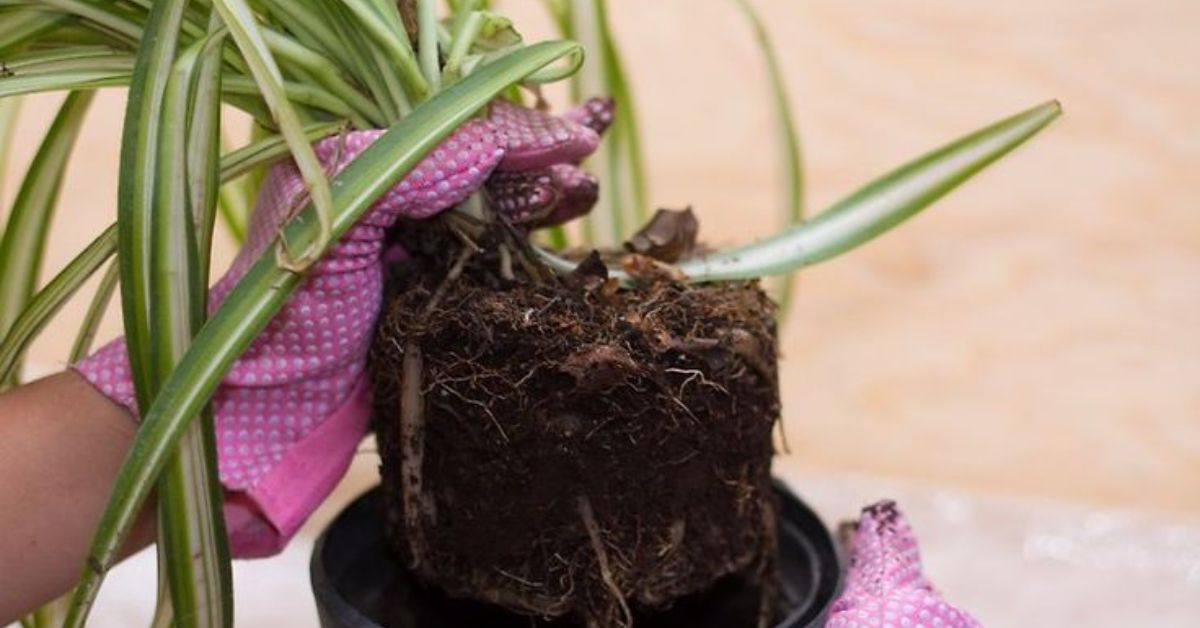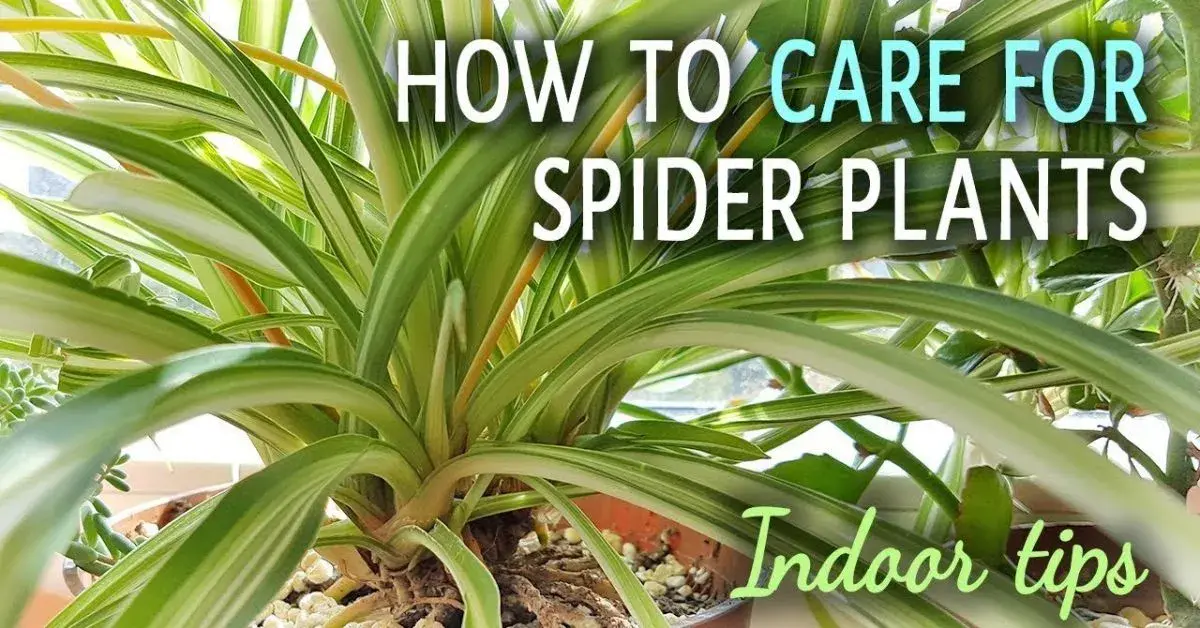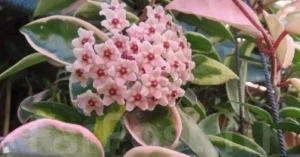Ever spotted those graceful arching plants with baby plantlets dangling like spiders on a web That’s the spider plant—your natural introduction to houseplants. These sturdy creatures will eat through failure—and give any room a bit of green color.
Don’t let the idea of being a plant parent stress you out! Spider plants actually prefer a laid-back approach rather than constant attention. They’ll do just fine in regular light and won’t mind if you skip a watering here and there. In fact, they’d much rather you leave them alone a bit!
You’ll be amazed at how much these plants give back! Not only do they clean the air you breathe, but they also reward your minimal care with adorable little offshoots that you can snip and grow into new plants. Now that’s what I call getting your money’s worth! With just a few easy care tips, you’ll go from being a plant beginner to a confident plant parent in no time.
Benefits of Having a Spider Plant
Spider plants aren’t just pretty faces—they’re hard-working air purifiers that filter out nasty chemicals like formaldehyde and xylene. NASA even included them in their famous clean air study. Plus, they’re completely non-toxic to pets and kids, so no panic if your curious cat takes a nibble.
They’re also natural stress-busters that bring a touch of the outdoors inside. And let’s talk value—one plant can produce dozens of babies you can share with friends or use to expand your indoor jungle. Talk about the plant that keeps on giving.
Choosing the Right Spot
Spider plants aren’t divas about lighting, but they’ll thank you for bright, indirect sunlight with more babies and vibrant stripes. A few feet from a window usually hits the sweet spot—direct sun scorches their leaves while deep shade makes them leggy and pale.
Temperature matters tooThese tropical plants dislike the cold. So, do not put them near drafty windows during winter. They will do well at normal room temperatures within 65-75°F. As for humidity, spider plants are not particular, but some misting during the dry winter months would do good.
Proper Pot and Soil

- Choose containers with drainage holes—spider plants hate soggy feet
- Clay pots work well as they allow soil to dry out between waterings
- Select a pot 1-2 inches larger than the root ball when repotting
- Use lightweight, well-draining potting mix—avoid heavy garden soil
- If you’re using standard potting soil, consider adding perlite or orchid bark to boost drainage.
- Spider plants thrive best in a slightly acidic to neutral pH, ideally between 6.0 and 7.0.
- Terracotta pots are great because they naturally wick away moisture, which helps prevent overwatering.
Watering Your Spider Plant
Avoid flooding your spider plant. This hardy species actually prefers the intervals between watering to be longer, so only give it water when the top inch of the soil is dry. You’ll see wilted leaves when they’re short on water, but they recover quickly.
Winter calls for less water, while summer might mean more frequent hydration. Yellow leaves often scream “too much water” while brown tips usually signal “I’m parched.” Listen to what your plant is telling you, and you’ll find the sweet spot in no time.
Humidity and Temperature Needs
Spider plants aren’t fussy about humidity, but they’ll show off their best colors in slightly moist air. A bathroom with natural light makes an excellent spot, letting them bask in shower steam. During winter when heaters dry out your home, give them an occasional misting or set up a pebble tray with water beneath the pot.
Like many of us, these residents of the tropics appreciate the comfortable warmth of indoor temperatures between 65 and 75°F. It is advisable to keep these plants away from chilly windows in the winter because they will sulk and limit their growth if the temperature falls below 50°F. However, these plants prefer mild, steady warmth over abrupt temperature swings, thus places next to air conditioners or radiators are also not suitable.
Feeding with Fertilizer
Spider plants require very little for their care, but some nutrients greatly benefit them. Use balanced liquid fertilizer at half concentration for spider plants once a month throughout spring and summer. Stop feeding during fall and winter to help prevent salt buildup during the dormant period.
Watch how your plant responds to feeding. Burning leaf tips might mean you’re overdoing it, while pale new growth suggests hunger pangs. Organic options like worm castings work wonderfully too—just sprinkle a thin layer on the soil and water it in. Your spider plant will reward your feeding efforts with more babies and lusher foliage.
Read more : How To Grow And Care For Drift Roses
Pruning and Removing Dead Leaves
- Trim brown tips with clean scissors, following the natural leaf shape
- Remove entirely yellow or dead leaves at the base with sharp shears
- Cut unwanted runners (stems with babies) close to the main plant
- Prune in spring or summer when the plant can recover quickly
- Sanitize your cutting tools with alcohol before and after pruning
- Remove spent flower stalks to redirect energy to foliage growth
- Thin out crowded plants by removing some of the outer leaves
- Save healthy cuttings for propagation rather than discarding them
Repotting Your Spider Plant
Don’t rush to repot spider plants as soon as roots start to show through drainage holes; they actually do better while they are slightly rootbound. You should take stock of your plant when it appears to be drying out too soon or when growth stops. Choose a container just 1-2 inches larger in diameter with plenty of drainage holes.
Spring makes the perfect time for repotting, when your plant enters active growth mode.Tease out the roots gently, trim any mushy or dark areas, and then plant it in new potting mix. Wait a week after repotting to water thoroughly so that any harm to the roots can heal. Your refreshed spider plant will soon show its appreciation with renewed vigor and fresh growth.
Propagating Baby Spider Plants
- Wait until spider plantlets develop small roots before removing from the mother plant
- Snip the connecting stem with clean scissors when roots reach about 1/2 inch long
- Place babies directly in moist potting soil—no need for rooting hormone
- Keep newly potted babies in bright, indirect light and consistently moist (not soggy)
- Expect new growth within 2-4 weeks as roots establish
- Don’t be discouraged if some leaves die back—this is normal during transition
- Consider water propagation by placing the baby in a small container of water until roots grow
- Share propagated plants with friends—they make thoughtful, long-lasting gifts

Common Problems and How to Fix Them
- Brown leaf tips often signal dry air or fluoride in tap water—try using distilled water or leaving tap water out overnight
- Yellow leaves typically mean overwatering—let soil dry out more between waterings
- Pale, washed-out foliage indicates too much direct sunlight—move to a brighter spot with filtered light
- Stunted growth could be a sign of root rot—check roots and repot in fresh soil if needed
- Curling leaves suggest underwatering—establish a more consistent watering schedule
- Lack of baby plants usually means insufficient light—relocate to a brighter position
- Brown spots might indicate sunburn—move away from harsh direct light
- Spider mites appear as tiny webs between leaves—treat with neem oil or insecticidal soap
Frequently Asked Question
How often should I water my spider plant?
Wait until the top inch of soil feels dry, typically every 7-10 days in summer and less frequently in winter.
Why are my spider plant’s leaf tips turning brown?
Usually from fluoride in tap water, low humidity, or fertilizer buildup—try using distilled water and misting occasionally.
When will my spider plant start producing babies?
With proper light and mature size (usually after 1-2 years), your plant will send out runners with baby plantlets, especially during spring and summer.
Can I keep my spider plant in the bathroom?
Yes! Spider plants thrive in bathroom humidity, provided there’s sufficient natural light.
How do I know when to repot my spider plant?
Usually every one to two years, repot when you observe roots growing from drainage holes or when growth slows.
Conclusion
Spider plants really live up to their title as the ultimate beginner houseplant. They require very little care but make a big statement in any room, helping you feel like a pro plant parent. Plus, their ability to thrive in various conditions means that even the most forgetful gardeners can enjoy success.
Beyond just looking good, these tough little plants bring a lot to the table that makes them totally worth the space they take up. They clean the air, are safe for pets and kids, and can multiply like crazy. Just think, one plant you buy today could turn into a whole bunch of thriving green friends by this time next year.
There’s something truly delightful about watching your spider plant flourish, with its lovely cascading runners and adorable little plantlets. It creates a wonderful bond with nature right in your own living space. As you get the hang of these essential care tips, you’ll find yourself developing those coveted green thumb skills that can easily be applied to other houseplants. Your journey with the spider plant is just the start of an exciting indoor gardening adventure.




